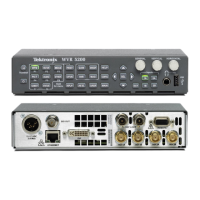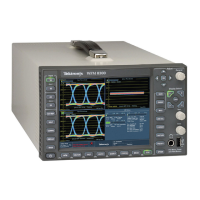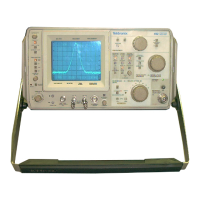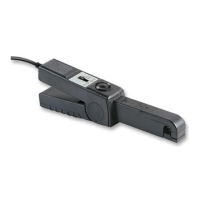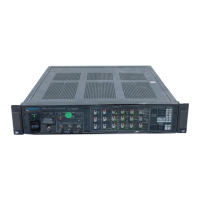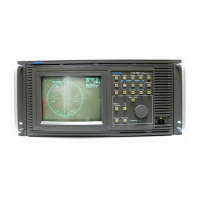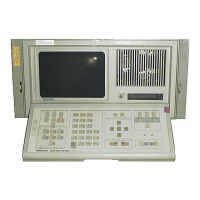Specifications
Table 33: Jitter Display characteristics (Option PHY) (cont.)
Characteristic Performance requirement Reference information
Settings Selectable 10 Hz, 100 Hz, 1 kHz, 10 kHz,
or 100 kHz high Pass filter applied to
demodulated jitter before peak detection.
High-Pass filter has type-3 response for
low-frequency rejection of 60 dB/decade
below the filter setting. High-Pass filter
applies to jitter readout, jitter waveform and
Eye diagram display. Two independent
jitter demodulators may be configured with
different loop bandwidths. One is applied to
the upper two tiles of the display, and the
other applies to the lower two tiles.
Attenuation Accuracy
Actual –3 dB frequency within 10% of
nominal.
High-Pass frequency response applies
to jitter readout, jitter waveform and Eye
diagram display.
High-End Frequency Response,
typical
–3 dB at >5 MHz.
Applies to jitter readout and jitter waveform.
Maximum Jitter, typical
Maximum is a function of jitter frequency and
standard.
Maximum jitter is limited by measurement
range at low frequencies, and by jitter
tolerance of serial receiver at high
frequencies.
HD
SD
20 UI at 30 kHz; 0.35 UI above 1 MHz
10 UI at 40 kHz: 0.35 UI from 1 MHz to
4 MHz; 0.25 UI above 4 MHz
Jitter Noise Floor, typical
Applies to jitter waveform.
HD at 10 Hz HPF 200 ps
HD at 100 Hz to 100 KHz HPF 40 ps
SD at All HPF Settings
250 ps
Digital Readout
Type
Displays peak-to-peak value of jitter over
the measurement interval, as defined by the
High Pass Filter setting.
Accuracy, typical
Error for jitter frequencies between HPF
setting and 5x HPF s etting due to loop
peaking, maximum of 1.5 dB.
HD at 10 Hz HPF
Within 0.3 UI + 10% of reading for jitter
frequencies from 5x bandwidth selection to
4MHz.
HD at 100 Hz to 100 kHz
HPF
SD at All HPF Settings
Within 0.05 UI + 10% of reading for jitter
frequencies from 5x bandwidth selection to
4MHz.
20 Waveform Rasterizers Specifications and Performance Verification
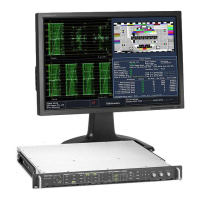
